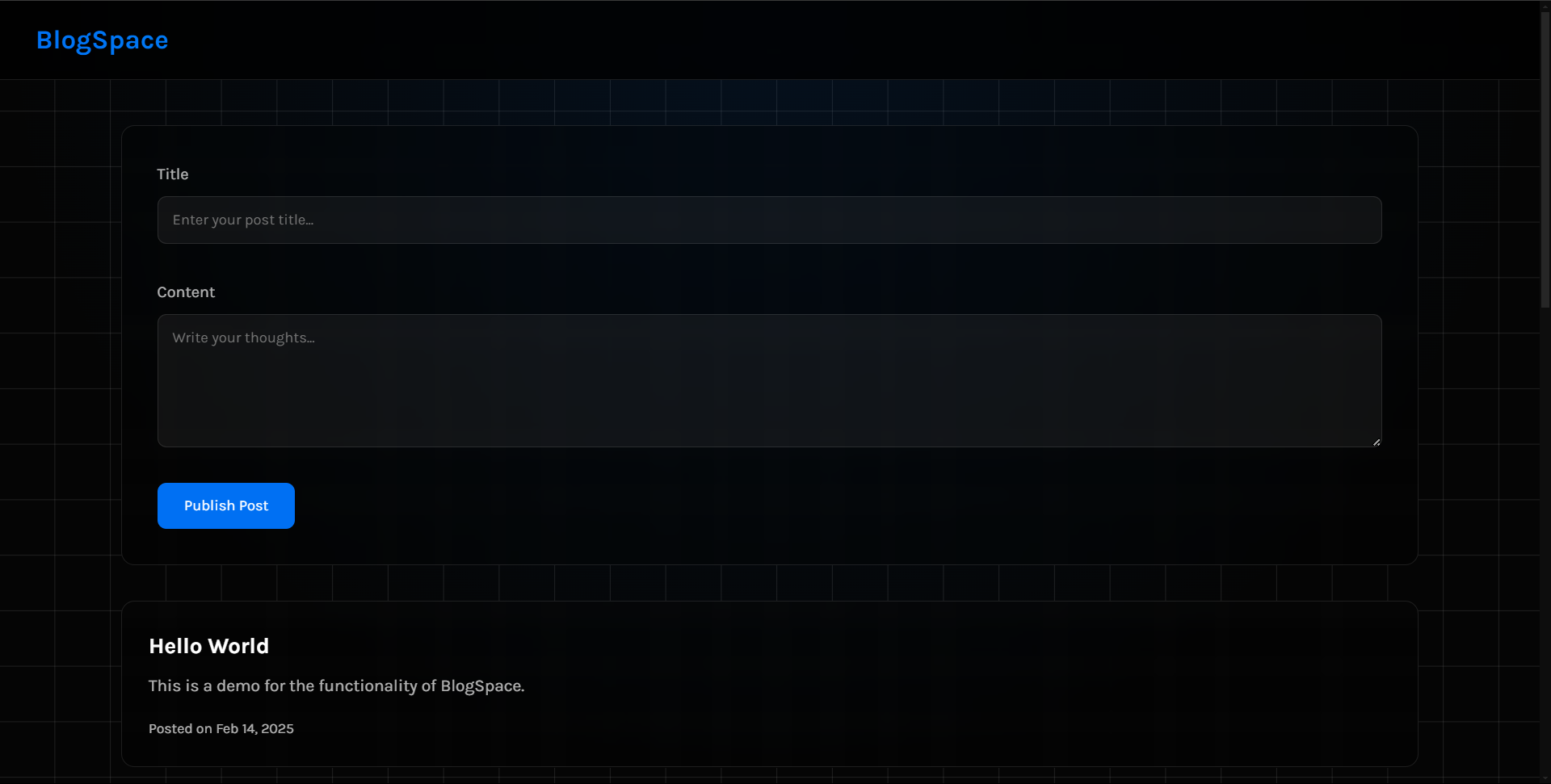Overview
BlogSpace is a simple blogging platform built with vanilla web technologies that allows users to both write and display blogs in a clean, user-friendly interface. The project focuses on providing a minimal yet functional blogging experience within Web Development.
Live: blogspace.ashwin.co.in
Source code: Explore Repo
Goals & Problems Solved
- Provide a simple platform for users to write and publish their own blogs.
- Enable blog display in a structured, easy-to-read format.
- Focus on clean design and straightforward user flow without overengineering.
- Showcase practical application of core web technologies (HTML, CSS, JavaScript).
Architecture & Tech Stack
| Layer | Technology / Library | Purpose |
|---|---|---|
| Frontend | HTML, CSS, JavaScript | Structure, styling, and interactivity |
| Hosting | Vercel | Deployment and live hosting |
Key Features & UX Flow
-
Blog Display
- Users can view existing blogs in a clean and readable format.
-
Blog Writing
- Built-in editor lets users create and publish their own blog posts.
-
Validation & Publishing
- Ensures proper input validation before allowing post submission.
-
Dynamic Interface
- Posts are instantly reflected on the UI once published.
Code Walkthrough & Notable Modules
- index.html: Serves as the main entry point with blog display and editor sections.
- styles.css: Handles layout, typography, and responsiveness.
- script.js: Implements blog creation logic, form validation, and UI updates.
- assets/screenshots/: Contains visuals of various screens for documentation.
UI / Responsiveness & Design Decisions
- Simple two-section layout: one for browsing blogs, another for writing.
- Responsive design ensures accessibility across desktops and mobile devices.
- Minimalist color palette to keep the focus on blog content.
Challenges & Learnings
- Designing a seamless user flow for both reading and writing blogs in the same interface.
- Handling DOM updates dynamically to reflect new posts.
- Ensuring responsiveness without using frameworks.
Future Improvements
- Add persistent storage (localStorage or backend integration).
- Include categories, tags, and search functionality.
- Add support for rich text formatting (bold, italics, links).
- User authentication for personalized blogging.
Screens & Visuals
Landing Page
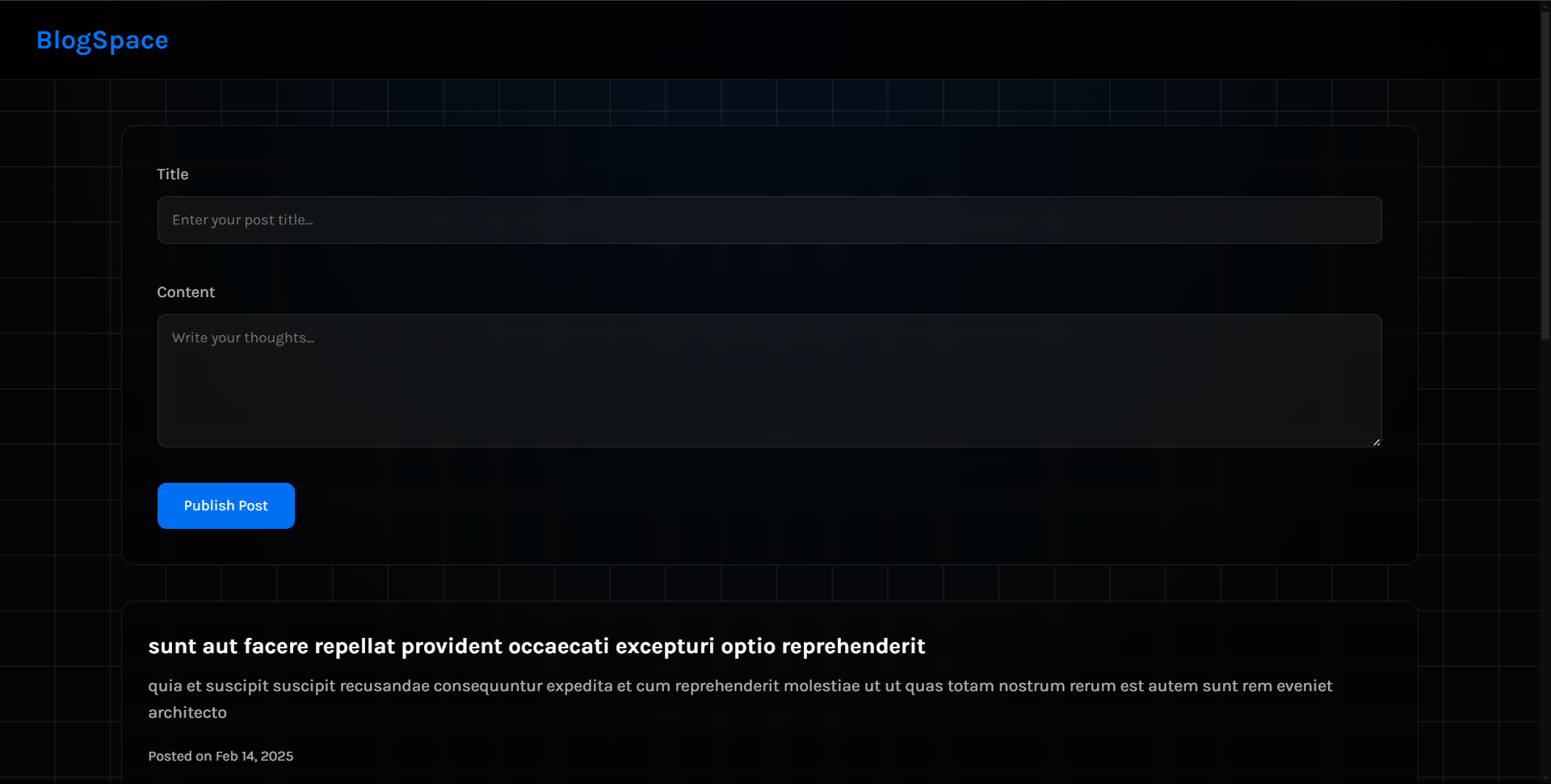
Full Interface
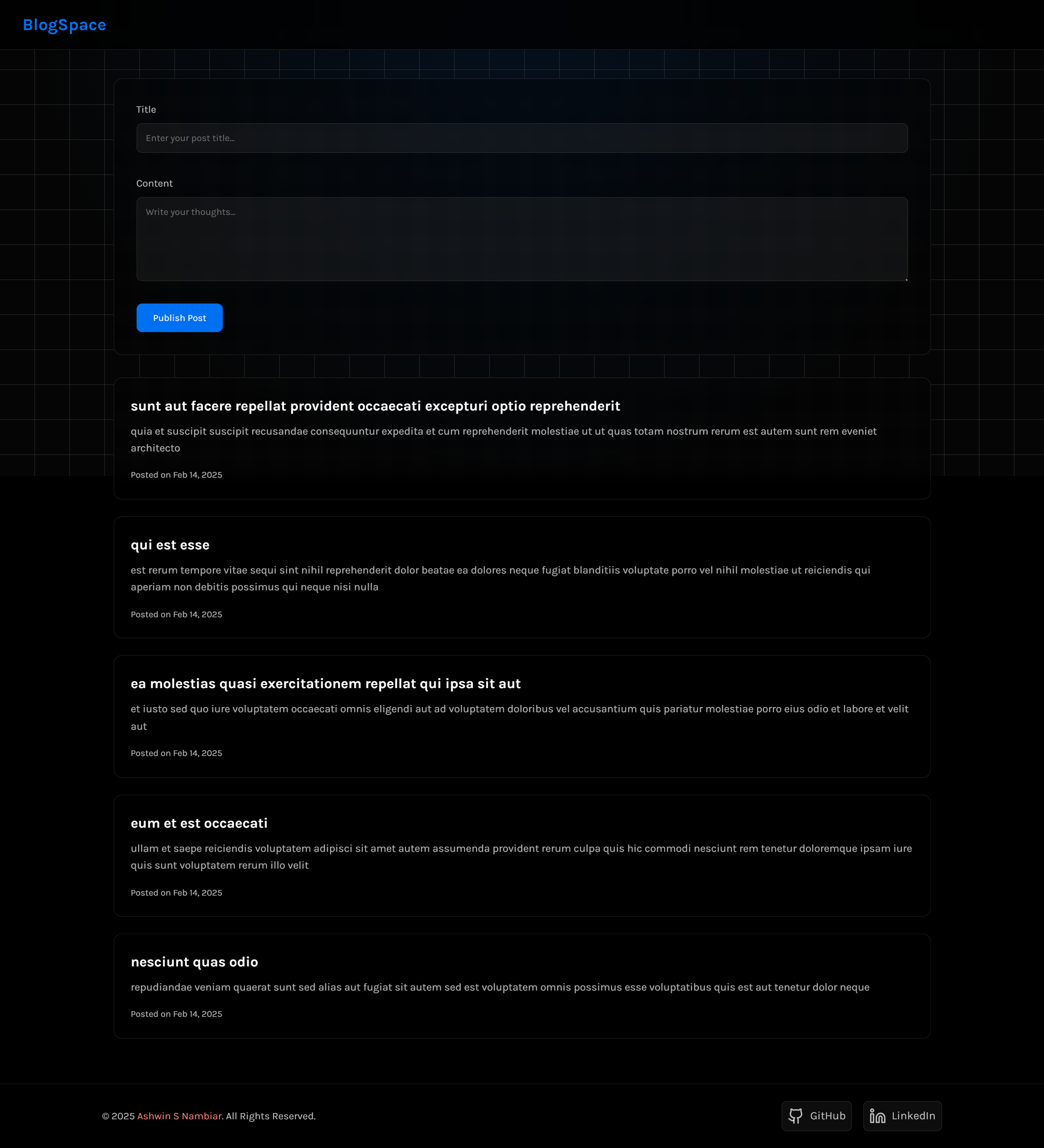
Footer
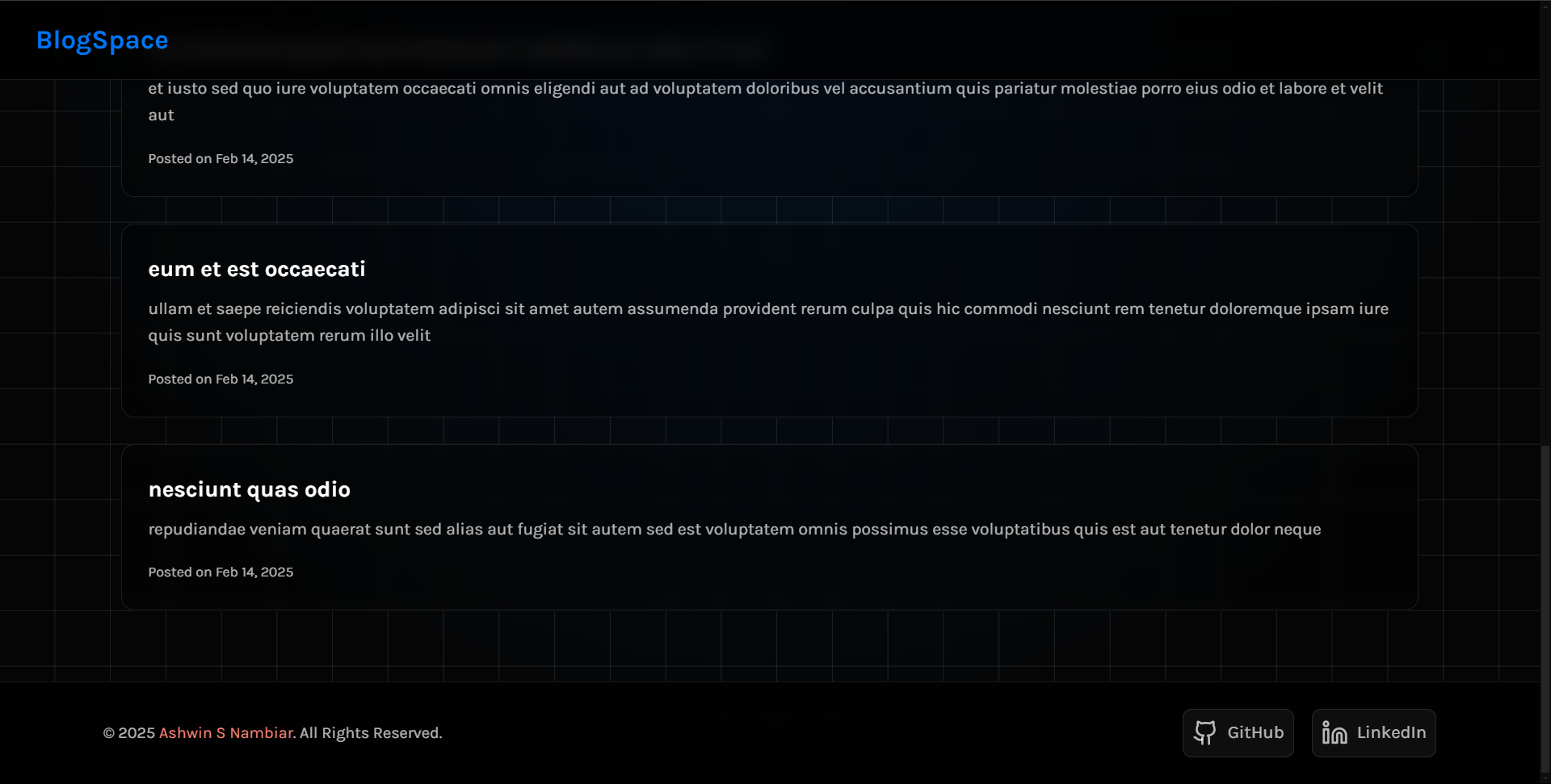
Publish Post
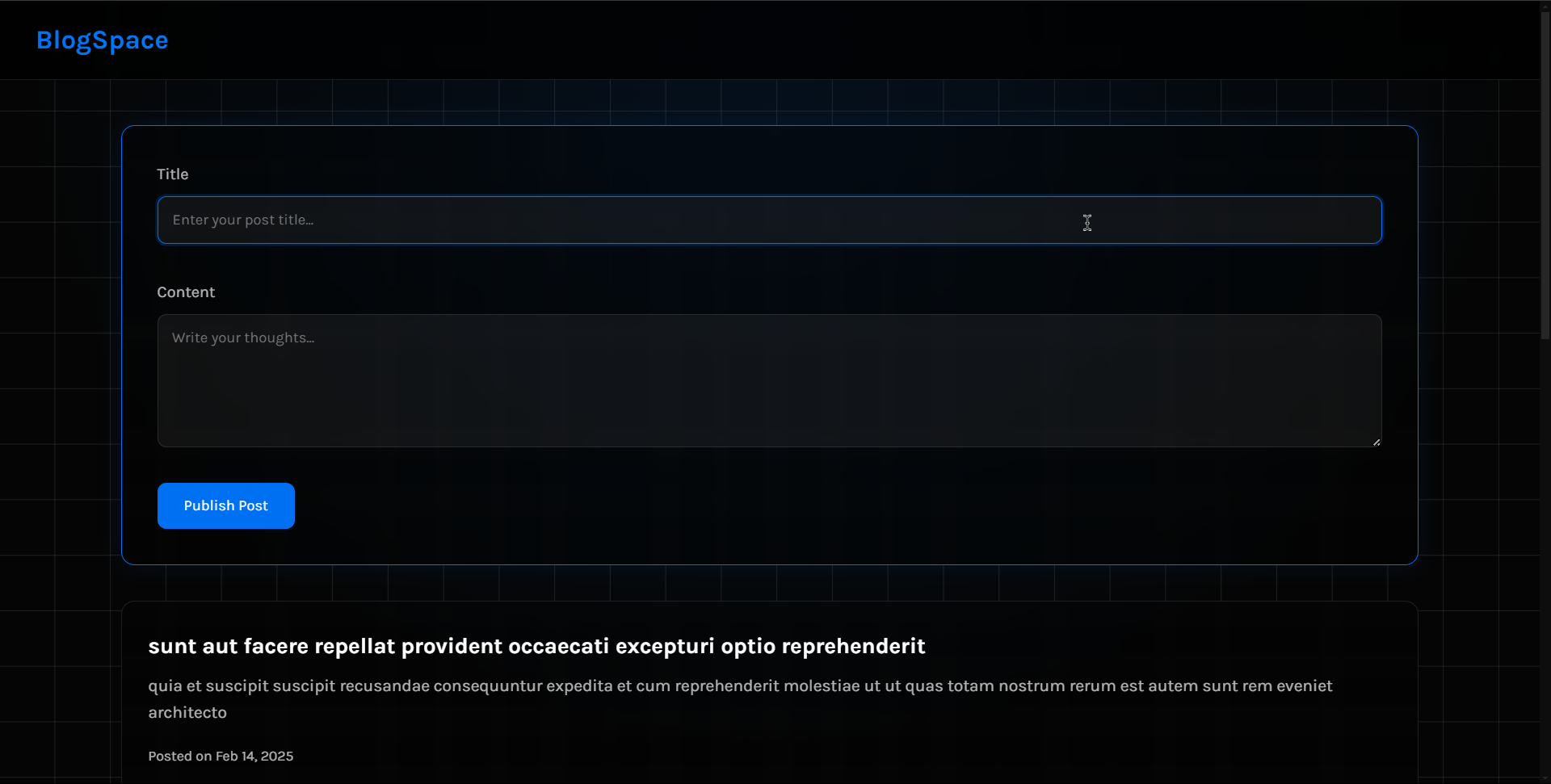
Post Validation
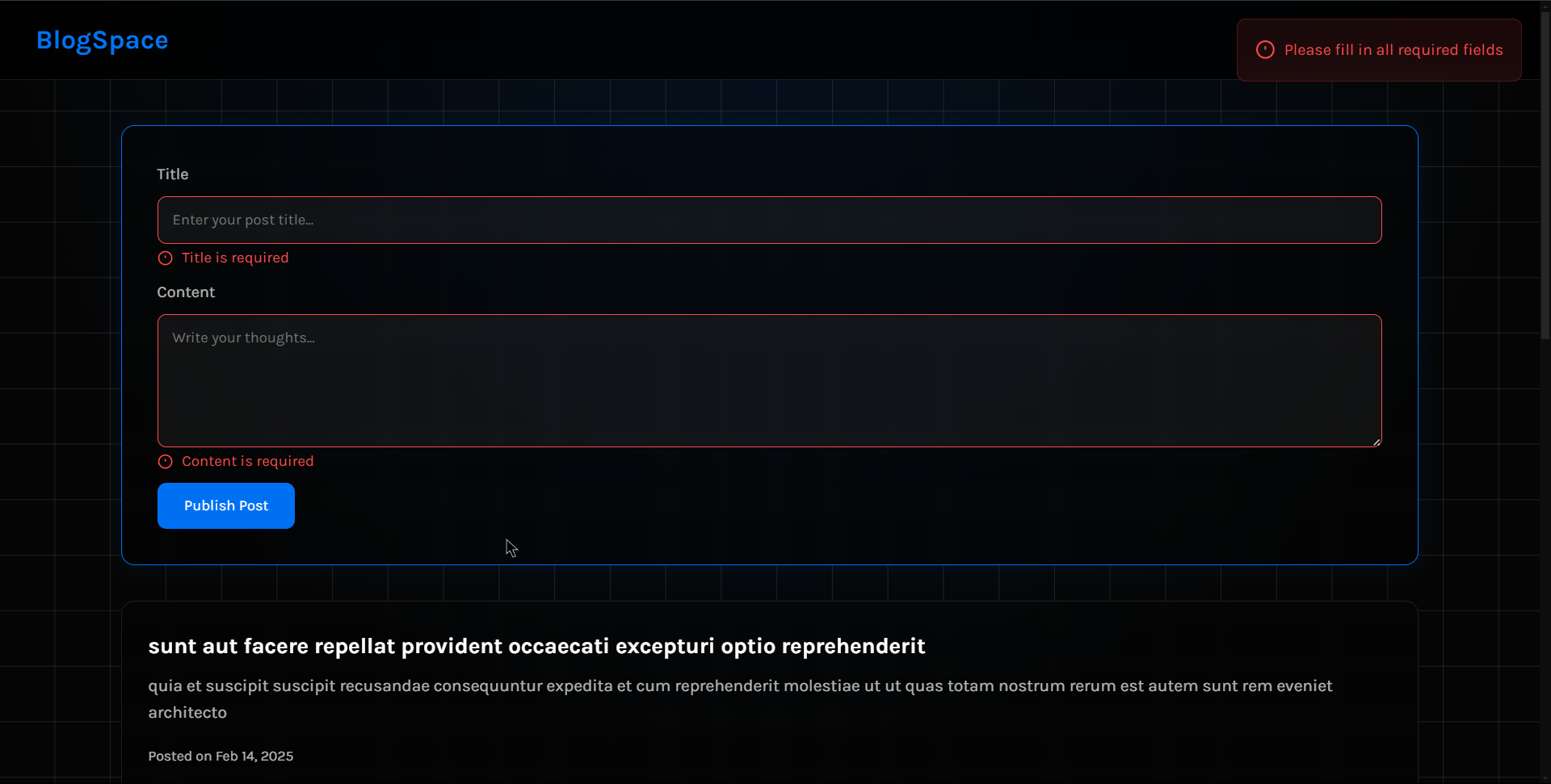
Writing a Post
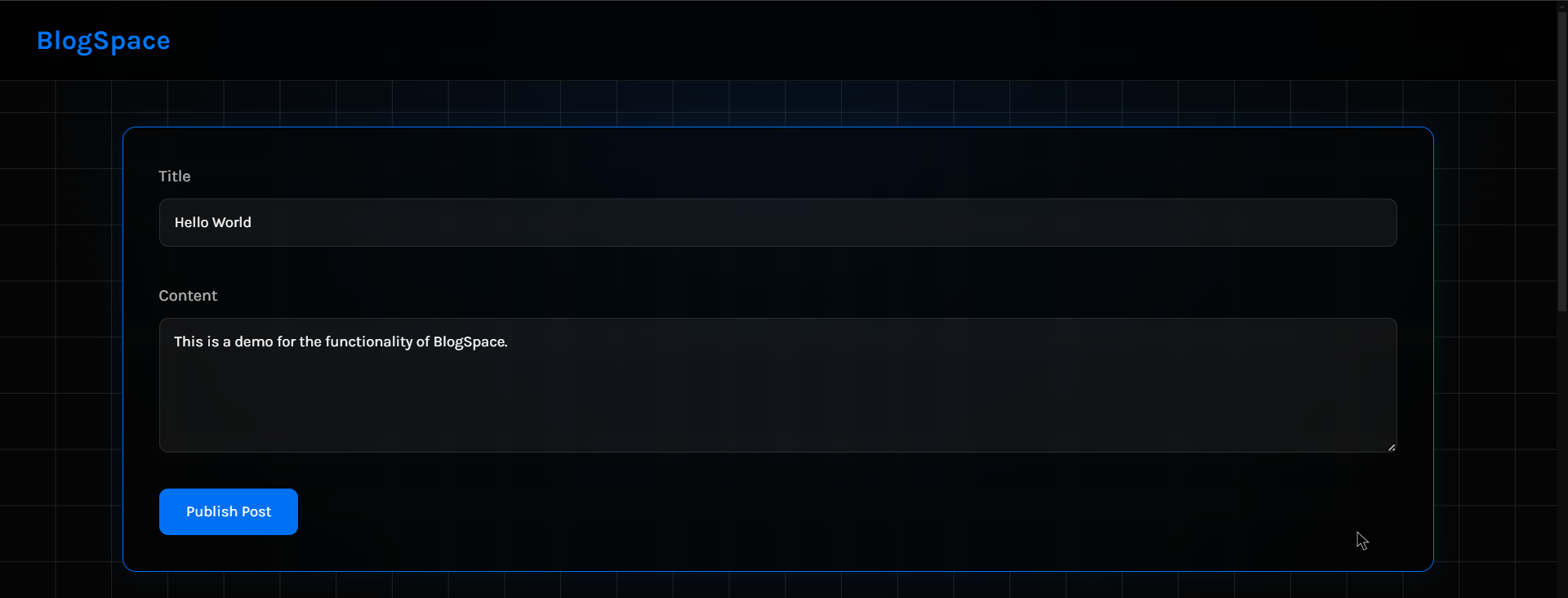
New Post Added
